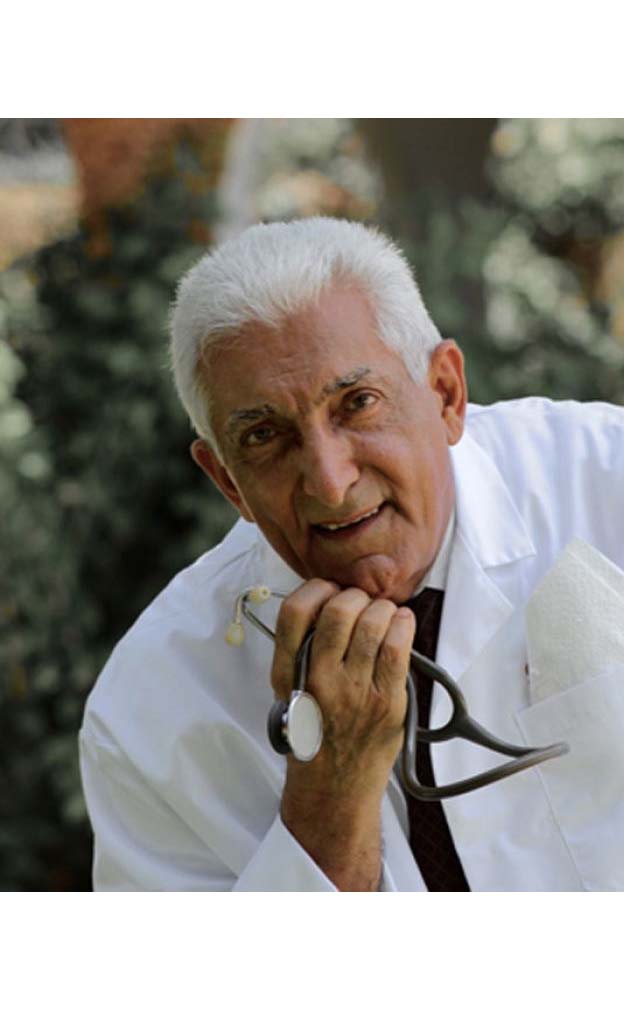
Fast facts on diabetes
Here are some key points about diabetes.
Diabetes is a long-term condition that causes high blood sugar levels.
Type 1 Diabetes - the body does not produce insulin. Approximately 10% of all diabetes cases are type 1.
Type 2 Diabetes - the body does not produce enough insulin for proper function. Approximately 90% of all cases of diabetes worldwide are of this type.
Gestational Diabetes –
This type affects females during pregnancy.
The most common diabetes symptoms include frequent urination, intense thirst and hunger, weight gain, unusual weight loss, fatigue, cuts and bruises that do not heal, male sexual dysfunction, numbness and tingling in hands and feet.
If you have Type 1 and follow a healthy eating plan, do adequate exercise, and take insulin, you can lead a normal life.
Type 2 patients need to eat healthily, be physically active, and test their blood glucose. They may also need to take oral medication, and/or insulin to control blood glucose levels.
As the risk of cardiovascular disease is much higher for a diabetic, it is crucial that blood pressure and cholesterol levels are monitored regularly.
As smoking might have a serious effect on cardiovascular health, diabetics should stop smoking.
Hypoglycemia - low blood glucose - can have a bad effect on the patient. Hyperglycemia - when blood glucose is too high - can also have a bad effect on the patient.
Diabetes is a condition where the amount of glucose in your blood is too high because the body cannot use it properly.
This is because your pancreas doesn’t produce any insulin, or not enough insulin, to help glucose enter your body’s cells – or the insulin that is produced does not work properly (known as insulin resistance).
Insulin is the hormone produced by the pancreas that allows glucose to enter the body’s cells, where it is used as fuel for energy so we can work, play and generally live our lives. It is vital for life.
Glucose comes from digesting carbohydrate and is also produced by the liver.
If you have diabetes, your body cannot make proper use of this glucose so it builds up in the blood and can’t be used as fuel.
There are two main types of diabetes: Type 1 diabetes and Type 2 diabetes.
Diabetes develops when glucose can’t enter the body’s cells to be used as fuel. This happens when either:
There is no insulin to unlock the cells (Type 1)
There is not enough insulin or the insulin is there but not
working properly (Type 2)
As the prevalence of diabetes increases, the need to learn how to minimize one’s risk of getting it, and to know how to detect and treat it, are all increasing in importance.
That is why WHO is promoting efforts to highlight the disease on the next World Health Day, 7 April 2016.
Through World Health Day 2016, WHO will seek to:
Increase awareness about the rise in diabetes, and its staggering burden and consequences, in particular in low-and middle-income countries;
Trigger a set of specific, effective and affordable actions to tackle diabetes. These will include steps to prevent diabetes and diagnose, treat and care for people with diabetes;
launch the first Global report on diabetes which will describe the burden and consequences of diabetes and advocate for stronger health systems to ensure improved surveillance, enhanced prevention, and more effective management of diabetes.
Importantly, the world took a major step recently to address the diabetes epidemic by setting a target to reduce by one-third the deaths attributed to noncommunicable diseases (NCDs), including diabetes, by 2030 as part of the Sustainable Development Goals.
In this regard, WHO helps countries put in place policies to minimize the impact of NCDs, which include diabetes, cancers, and cardiovascular and lung diseases.
Background
Close to 350 million people in the world have diabetes, a chronic disease that occurs when the body does not produce enough insulin or when it cannot effectively use the insulin it does produce to help the body metabolize the sugar that is formed from the food we eat.
Insulin is a hormone that regulates blood sugar, which gives us the energy we need to live. Unable to get into the cells to be burned as energy, the sugar can build up to harmful levels in the blood.
In 2012, diabetes was the direct cause of some 1.5 million deaths, with more than 80% of them occurring in low- and middle-income countries
WHO projects that diabetes will be the 7th leading cause of death by 2030.
World Diabetes
World Diabetes Day is the primary global awareness campaign of the diabetes world and is held on November 14 each year. It was introduced in 1991 by the International and the World Health Organization in response to the alarming rise of diabetes around the world.
World Diabetes Day is a campaign that features a new theme chosen by the International Diabetes Federation each year to address issues facing the global diabetes community.
Each year, World Diabetes Day is centered on a theme related to diabetes. Topics covered have included diabetes and human rights, diabetes and lifestyle, diabetes and obesity, diabetes in the disadvantaged and the vulnerable, diabetes in children and adolescents. People with diabetes get to take a day off work or school on this day and talking about Diabetes.
World Diabetes Day is celebrated worldwide by the over 230 member associations of the International Diabetes Federation in more than 160 countries and territories, all Member States of the United Nations, as well as by other associations and organizations, companies, healthcare professionals and people living with diabetes and their families.
The global diabetes community including International Diabetes Federation member associations, diabetes organizations, NGOs
There are two main forms of the disease. People with type 1 diabetes typically make none of their own insulin and therefore require insulin injections for survival. People with type 2 diabetes, the form that comprises some 90% of all cases, usually produce their own insulin, but not enough or they are unable to use it properly. People with type 2 diabetes are typically overweight and sedentary.
Over time, high blood sugars can wreak havoc on every major organ system in the body, causing heart attacks, strokes, kidney failure, blindness, impotence and infections that can lead to amputations.
But, properly treated, the impact of diabetes can be minimized. Even people with type 1 diabetes can live long and healthy lives if they keep their blood sugars under tight control.
Diagnosis of Diabetes
Accurate tests are available to doctors to definitively confirm a diagnosis of diabetes.
Before tests are conducted, a diagnosis may be suspected when patients report certain symptoms. Doctors will evaluate these symptoms by asking questions about the patient’s medical history.1
Doctors may also carry out a physical examination, including checks for complications that could have already developed - examining the feet for changes in sensation, for example.2
Testing can be part of routine screening for people at risk of the disease, who may show up as having prediabetes. The US Department of Health and Human Services recommends diabetes testing for anyone overweight at the age of 45 years and over, alongside anyone under the age of 45 with one or more of the following risk factors:
.Hypertension (high blood pressure)
.High cholesterol
.History of diabetes in the family
.African-American, Asian-American, Latino/Hispanic-American, Native American or Pacific Islander background
.History of gestational diabetes (diabetes during pregnancy) or delivering a baby over 9 lbs.
Blood tests for diabetes diagnosis
Diagnoses of diabetes are confirmed through 1 of 3 types of blood test.
One of three blood tests can be used to confirm a diagnosis of diabetes:
Fasting plasma glucose (FPG) levels - a blood test after 8 hours of no eating
Glycosylated haemoglobin (HbA1c) - to measure a marker of the average blood glucose level over the past 2-3 months
Oral glucose tolerance testing (OGTT) - a test used less frequently that measures levels before and 2 hours after consuming a sweet drink (concentrated glucose solution).
Glycosylated hemoglobin is often abbreviated to A1C, and this blood test is also used in the monitoring of diabetes management.
To make an initial diagnosis, an HbA1c reading must be 6.5% or higher. An A1C result between 5.7% and 6.4% indicates prediabetes and a risk of type 2 diabetes.
The HbA1c is the preferred blood test for diagnosis because - while it is more expensive than the FPG test - it has advantages, including
. Urine tests for diabetes were once common but are no longer considered reliable
Greater convenience (no need for fasting)
Less day-to-day variation during stress and illness.
When the fasting plasma glucose test is used to confirm symptoms, diabetes is diagnosed at levels equal to or above 126 mg/dL (7.0 mmol/L).
For oral glucose tolerance testing, the plasma glucose levels after 2 hours need to be equal to or above 200 mg/dL (11.1 mmol/L) for a diabetes diagnosis.
Another blood test is the random plasma glucose test - taken regardless of time and eating - which diagnoses diabetes if the level is at least 200 mg/dL (11.1 mmol/L).
For further information go on line of Gambia Diabetes Society. com, at EFSTH, the main Government’s Hospitals and Health centers throughout the country, MRC, number of NGO and Private Clinics, Email to azadehhassan@yahoo.co.uk, text only to Dr Azadeh on 02207774469/3774469 from 3-6 pm.
Author DR AZADEH Senior Lecturer at the University of the Gambia, Senior Consultant in Obstetrics & Gynaecology, Clinical Director of The Medicare Health Services.
Read Other Articles In Article (Archive)




